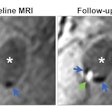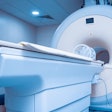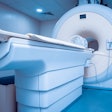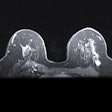
It's not surprising that neuroradiology work shifts with a high volume of studies to interpret lead to more diagnostic errors, according to a study published September 27 in Academic Radiology has found.
But what's sobering is that these errors -- which may include missed or misinterpreted findings such as tumors, intracranial arterial/venous abnormalities, fractures, brain infarcts, or intracranial hemorrhages -- can have a dangerous effect on patients, wrote a team led by Dr. Vladimir Ivanovic of the Medical College of Wisconsin in Milwaukee.
"Medical errors can result in significant morbidity and mortality," Ivanovic and colleagues noted.
Diagnostic errors boost healthcare costs and prompt 75% of radiology malpractice suits, Ivanovic and colleagues noted. These mistakes tend to be classified as either interpretive (a finding is identified but its significance is misinterpreted) or perceptual (a finding is missed). According to the authors, perception errors are more common: They account for 40% to 80% of diagnostic mistakes.
Ivanovic and colleagues sought to explore the nature and prevalence of diagnostic errors in radiology via a study that included 654 CT and MRI reports from an academic center's neuroradiology quality assurance database that included diagnostic errors; the exams were performed between 2014 and 2020. The investigators tracked shift volume, category of missed findings, type of error, interpretation setting, type of exam, and clinical significance.
The mean volume of interpreted imaging exams on shifts during which diagnostic errors were made was higher than those made during shifts where no errors were found, at 46.6 compared with 34.1 (p < 0.00001). These mistakes tended to be perceptual rather than interpretive, at 49.5 during the shift compared to 43.3 (p = 0.0094), according to the investigators.
Most (59.6%) of the errors the research team identified occurred in the emergency room or the inpatient setting. Of these, 91.1% were clinically significant and 84% were due to perception mistakes. In terms of imaging modality, the team found the most errors occurred on brain MRI studies (25.4%), followed by head CT exams (18.7%), head/neck CT angiography studies (13.8%), and spine MRI exams (13.7%).
The fact that higher reading volume during a shift translates into a higher number of errors isn't necessarily surprising, the group noted, although the researchers did acknowledge that the proportion of perceptual and clinically significant errors the study uncovered is higher than that reported in previous research.
But in order to reduce the number of diagnostic errors, it's important to be aware of what could be prompting them, the investigators explained, with causes ranging from heuristic thinking (mental shortcuts) and cognitive bias (framing, satisfaction of search) to systemic errors (workplace interruptions, understaffing) and longer shift lengths.
How can the number of errors be reduced? The solution could be as simple as setting a limit on how many exams a radiologist reads during a shift. Individual facilities could do this, but national guidelines would help as well. Other ideas could be to adjust reimbursement structures to incentivize improved performance, stabilize staff levels, and hold missed-case debriefings.
"We are actively investigating other variables that may show potential correlations with diagnostic errors, with the goal of implementing strategies toward reducing errors, improving patient care, and lowering medicolegal exposure," the authors concluded.



.fFmgij6Hin.png?auto=compress%2Cformat&fit=crop&h=100&q=70&w=100)





.fFmgij6Hin.png?auto=compress%2Cformat&fit=crop&h=167&q=70&w=250)











